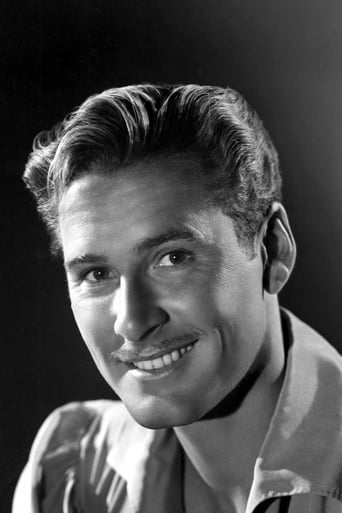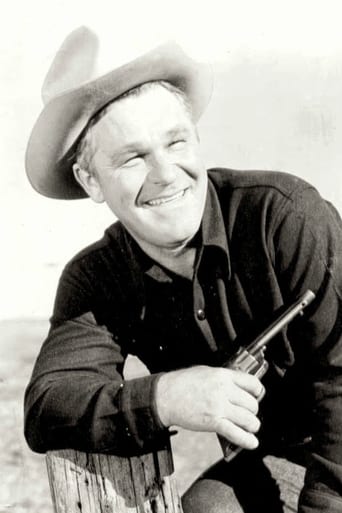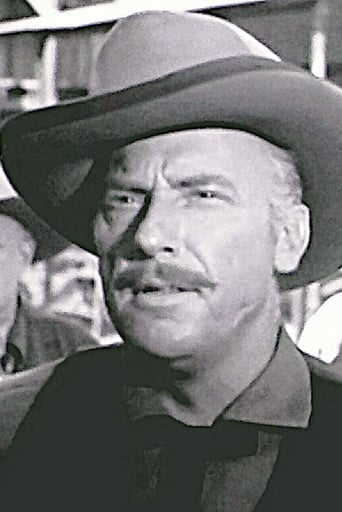weezeralfalfa
This is the 4th film I'm aware of in which Errol Flynn's character dies an unnatural death: 3 in battle, and one by execution by a firing squad(in Vichy France). As my review title suggests, this film incorporates elements of the other 2 films in which Flynn's character dies in battle: "The Charge of the Light Brigade" and "They Died with their Boots on". However, in the present film, Flynn's small group of Confederate rangers are not a formal cavalry detachment. They are faced with apparent certain death, trapped in a box canyon, vastly outnumbered by Shoshone warriors bent on revenge. Thus, they decide to mount a cavalry-like charge at the Shoshone, hoping to send a few of them to the happy hunting grounds, along with themselves.This film belongs to a small group of Hollywood films that dramatized the dream of stealing California, or just the southern part, for the Confederacy, or alternatively stealing or transporting some gold from CA to the eastern Confederacy, in a last gasp effort to save the nearly sunken Confederacy. Flynn had previously been the lead in trying to stop such a gold shipment from CA, in "Virginia City", one of two films(along with "Hangman's Knot") in which Randolph Scott headed the small Confederate party intent on delivering CA gold to the East. Interestingly, Patrice Wymore, soon to become the 3rd Mrs. Flynn, was the female lead in both films I'm aware of that dramatize a scheme to steal CA or just southern CA for the Confederacy, the other being Randolph Scott's subsequent "The Man Behind the Gun".Even in 1950, shooting in color was still considered a luxury feature, as the 3 strip Technicolor process had not generally been replaced by a single film, requiring much smaller cameras. As Flynn was then considered by Warners to be well past his prime, this rather low budget film, unfortunately, was shot in B&W. It was mostly shot in some spectacular red rock canyon lands around Gallup, N.M., which would have been nice to see in color!The plot is awfully contrived. While there was some hope early in the war that the Confederacy might win at least parts of NM, AZ, and CA, the possibility that a small contingent of rebels might wrest CA for the Confederacy at this late stage in the war is absurd. However, a strength of the screenplay is that it doesn't play out in a predictable manner. What begins as an anticipated Confederates vs. Unionists showdown in CA ends in primarily a conflict between the Shoshone vs. Barstow's bunch plus Union cavalry, acting separately. In this respect, it's basically a replay of "Virginia City", with the Shoshone replacing Bogart's Mexican banditos, and the difference that the Confederates and Unionists here are acting separately , rather in unison. The ending also smacks of "A Tale of Two Cities", with Barstow's bunch acting as a diversionary lure to deflect a capture of Union commander Rickey's fiancé: Johanna(Patrice Wymore) by the Shoshone. Whereas in "Virginia City", Flynn, playing the lead Union officer, gets the girl by default, since Confederate leader Scott is killed; here, with Flynn playing the Confederate lead, he loses the girl to the lead Union officer, again by default of his death, if no other reason. While Barstow makes no overt play for Johanna, clearly a degree of emotional bond develops between them, tempered by Barstow's hostile attitude toward the captured Yankee soldiers.Patrice seems a bit stiff in her role as Johanna, one of only two survivors of an overturned stage, running to escape a Shoshone attack, with Barstow's bunch scaring the Shoshone off. Rickey soon shows up with a few soldiers and a few Shoshone scouts. Barstow decides to try to capture them, rather than killing them in an ambush, with Johanna serving as bait. In this, he succeeds, in a tense segment when Barstow's bunch have a Shoshone chief(Mad Dog, one of the scouts), as well as Rickey, as prisoners of war. Both Rickey and Mad Dog escape the less than stellar night security. Mad dog's escape and the related killings of his scout sons proves a death sentence for Barstow's bunch, as they soon realize. Also, now realizing that their mission to help capture CA is a certain failure, even if they should escape, they change their mission to saving Johanna.Unlike most westerns of the time, there is little small talk humor in the film. Flynn and the others play it pretty straight and gritty, seemingly knowing that that their mission to help save the Confederacy had a near zero chance of success. Much of the action takes place at night or near dusk or dawn. We get to learn a bit about each of the Confederates, who came from many different states.Bewhiskered 'old timer' Chubby Johnson served a familiar role as the stage driver, who survived all this. .. I didn't understand the behavior of Cole Smith: the supposed CA rebel contact man.Incidentally, the Shoshone chief's name of Mad Dog was presumably borrowed from the famous Creek of the same name.
Albert Mazeika
Slow moving, but watchable, tho' I think describing it as "John Ford Lite" is being more than charitable. This somewhat off-beat Civil War western pairs an in-decline Errol Flynn with his 3rd wife, Patrice Wymore. Flynn leads a small Confederate patrol out to California on a secret mission from Robert E. Lee to save the Confederacy. A dozen or so years earlier the film's director, William Keighly, had been replaced as director on THE ADVENTURES OF ROBIN HOOD. WB management was disappointed with the early rushes on ...ROBIN HOOD and brought in their workhorse and Master-Of-All-Genres, the great, Michael Curtiz, who picked up the reins and completed what is generally regarded as THE classic swashbuckler.
vincentlynch-moonoi
This is not one of Errol Flynn's great Westerns (and he had several), but it is quite a bit better than the average western of the time period right around 1950, so it is definitely worth watching. And although Flynn's star was beginning to fade by this time, he is still excellent here -- a very pleasing mix of rugged and a gentleman.The story is a bit different than what we usually see in Western -- it's actually about a group of Confederate soldiers that are on the eastern side of the Sierra Nevada Mountains, preparing to raise a band of less than noble men to start trouble and turn the Civil War around by changing the balance of power in the West. What they didn't take into account was that in addition to having to fight Union soldiers, they'd be in Indian territory, as well. Now the only real problem is that the scenery here is clearly red rocks (although in a black and white film), not what you'd see just east of the Sierra Nevadas. Looks more like what you'd see in northwestern New Mexico...which is, by coincidence...where it was filmed.The only star of note in the film is Errol Flynn, and he carries the film well. The rest of the cast play their supporting roles well, though there are no stars of note. Patrice Wymore, as the love interest (fiance of the Union soldier) wasn't ever a very notable actress, but she's attractive and does well here. Scott Forbes and the lead Union soldier is fine, but not notable. You'll recognize Chubby Johnson as the amiable stagecoach driver, and Slim Pickens and Sheb Wooly.There are 2 things wrong with this movie. First, with this scenery, it really should have been in color...it would have been stunning. Second, a dog can't run that far in a desert (you'll understand when you watch this film).This is not a film where everyone lives happily ever after, including Errol Flynn. It ends pretty much the way it had to end, but along the way it strived to show that Confederates were honorable men who were on the wrong side of history. I don't think I ever rooted for the Confederates in any film, and this may be the first Western where I shed a tear. Highly recommended.







